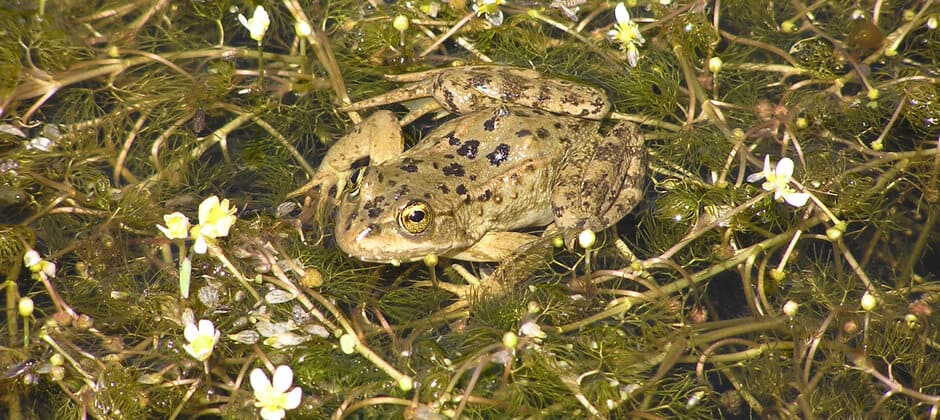Share this article
TWS2020: Pond digging helps desert frogs survive drought
Mitigation measures to maintain ponds in Nevada meadows help the survival of a desert frog species experiencing increasing impacts from climate change-driven droughts.
“Drought is one the greatest threats to Columbia [spotted] frogs in the southernmost isolated part of their range and drought has become increasing frequent in the last 20 years,” said TWS member David Pilliod, a research ecologist at the U.S. Geological Survey and one of the scientists involved in ongoing research featured this week at The Wildlife Society’s virtual 2020 Annual Conference on a video presentation..
The Columbia spotted frog (Rana luteiventris) is found throughout western North America, from Alaska through British Columbia and down to the Great Basin. The frog was petitioned for listing under the Endangered Species Act in 1989, since the population in the south of its range was thought to be isolated and vulnerable to water diversions, drought, invasive species and habitat loss. In 1993, the U.S. Fish and Wildlife Service ultimately decided not to list the species because other species were higher priority.
“Since then, these populations have either been withdrawn from consideration or ruled not warranted for listing because of the reduction or elimination of threats,” Pilliod said.
Drought continues to be a major problem for the frogs, though. Amphibians need water to lay their eggs, and increasingly severe droughts are drying up many of these small ponds.
“As climates change, some regions of the world are experiencing increasing drought, which manifest as reducing precipitation that persists long enough to have hydrologic and ecological effects,” Pilliod said.
State and federal agencies have taken mitigation measures in Nevada in an attempt to slow some of the declines related to drought in the central region of the state. Pilliod and his co-authors set out to determine whether these efforts have been effective.
The agencies first took action in 2004 in meadows in the Toiyabe Mountains of central Nevada, excavating 19 ponds in the area. They excavated 13 more in 2009, and in 2011 they took other measures to create new ponds and stymie water loss in others.
Pilliod and his co-authors found that these efforts contributed to greener meadows, regardless of the annual rainfall in the area, compared to areas where ponds had not been excavated.
“We found that drought mitigation actions increased surface water and meadow moisture,” Pilliod said.
They also found that the artificial ponds increased survival and recruitment of new frogs, especially in meadows dependent on groundwater rather than precipitation.
“Drought mitigation did protect these frog populations from negative effects of drought in this high desert environment,” Pilliod said.
The researchers aren’t sure yet why digging new ponds in precipitation-dependent meadows didn’t improve frog survival or recruitment. “We suspect that the lack of groundwater in these meadows may be problematic for frogs in general,” he said, or changes beneficial to frogs may take longer to develop in these systems.
Conference attendees can visit office hours for this contributed paper on Friday, Oct. 2 from 2 p.m. to 3 p.m. to learn more and ask questions. A video recording of the presentation will be available starting Monday, Sept. 28.
Header Image: A Columbia spotted frog appears in the Great Basin. Credit: USFWS photo, Kristin Lohr








